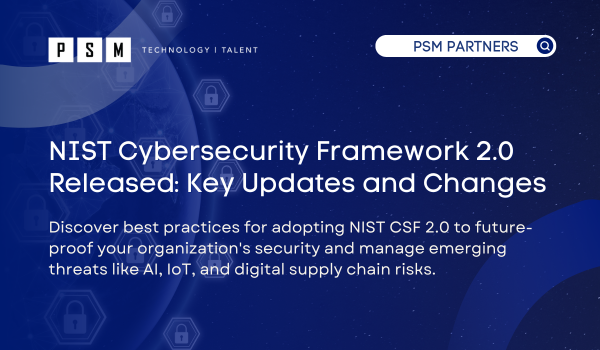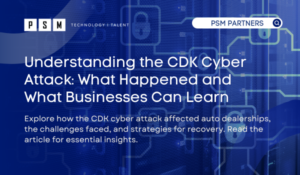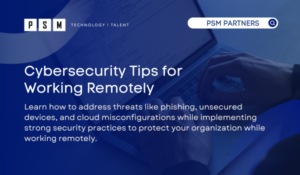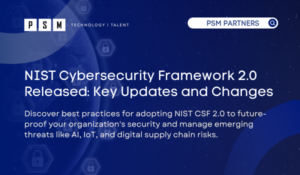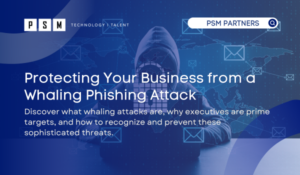Table of Contents
ToggleIn today’s rapidly changing IT environment, having a robust security framework is crucial. The NIST Cybersecurity Framework, developed by the National Institute of Standards and Technology (NIST), has released version 2.0 with key updates and changes. A report reveals that 56% of respondents are unsure of the appropriate steps to take in response to a security incident. This alarming statistic highlights the growing need for businesses to adopt comprehensive cybersecurity solutions. Without the right safeguards in place, companies risk data incidents, financial losses, and reputational damage. Investing in proactive security strategy ensures your organization can effectively respond to incidents and minimize risk in an increasingly digital world. In this blog, we will explore the NIST Cybersecurity Framework, highlight key updates and changes, and provide best practices to help keep your company secure.
What is the NIST Cybersecurity Framework?
The NIST Cybersecurity Framework (CSF) offers guidelines, best practices, and helpful tools, incorporating existing standards into an improved security posture. A recent report reveals that 50% of companies implement the NIST CSF, a testament to its status as a premier source of truth in the evolving field of cybersecurity. By embracing this voluntary framework, businesses can significantly enhance their cybersecurity strategies, save time and money, and protect their digital assets more effectively.
Already Implemented the NIST Cybersecurity Framework (CSF)?
For organizations already compliant with NIST CSF 1.0, transitioning to the updated version doesn’t require starting from scratch. In fact, the framework is more accessible than ever, as NIST has expanded the focus of CSF 2.0 to apply to organizations in general – as opposed to the first versions that focused primarily on critical infrastructure. This is part of NIST’s mission to democratize cybersecurity and “move from best practice to common practice.” Organizations that have already worked toward implementing NIST CSF 1.0 or 1.1 can benefit from a gap analysis- pinpointing areas where existing processes can be optimized to meet the new requirements. Rather than an overhaul, the process will focus on fine-tuning and enhancing current practices.
Ultimately, moving to the latest NIST CSF version is not only about compliance but about future-proofing your security strategy against unforeseen threats. With expert guidance and the right cybersecurity infrastructure, your organization can grow into a new framework, ensuring robust security controls for all.
Understanding the NIST Cybersecurity Framework 2.0:
Launched on February 26, 2024, NIST CSF 2.0 builds on the original framework, which was designed to strengthen cybersecurity in critical infrastructure sectors. NIST, an agency that advances measurement science, standards, and technology, aims to provide more accessible guidance and updated practices to counter modern security threats in version 2.0. This new version acknowledges the global shift from traditional on-premises systems to cloud environments, offering enhanced controls for managing the risks faced by modern organizations.
Key Updates and Changes in NIST CSF 2.0
The NIST CSF 2.0 introduces several significant updates, including:
1. Expanded Framework Core: The original NIST Cybersecurity Framework (CSF) consisted of five core functions – Identify, Protect, Detect, Respond, and Recover. The updated version introduces a new “Govern” function, emphasizing the critical role of governance and strategic planning in corporate cybersecurity and compliance programs. The GOVERN function outlines the necessary outcomes to guide organizations in achieving and prioritizing the objectives of the other five functions, aligning them with their mission and stakeholder expectations. It addresses the understanding of organizational context, the development of a cybersecurity strategy, cybersecurity supply chain risk management, roles and responsibilities, policy formulation, and oversight of the cybersecurity strategy.

2. Updated Implementation Tiers: The implementation tiers of the NIST Cybersecurity Framework (CSF) have been updated to offer clearer guidance for organizations assessing and enhancing their cybersecurity maturity. By following a structured action plan, businesses can effectively identify gaps and progress from their “Current Profile” to their “Target Profile”. This action plan may include an overall deadline or be designed as an ongoing effort. NIST CSF 2.0 also provides practical implementation examples, illustrating how executives, managers, and practitioners can apply the framework. Additionally, NIST’s new quick-start guides (QSGs) are included to facilitate the adoption of specific cybersecurity practices like “Creating and using Organizational Profiles” and “Drafting Cybersecurity Supply Chain Risk Management”. Together the CSF’s profiles, tiers, and quick start guides can accelerate an organization toward stronger cybersecurity.
3. Collaboration and Information Sharing: The NIST Cybersecurity Framework (CSF) is enhanced by a variety of online resources that support organizations in their cybersecurity efforts. However, many of these resources were often outdated and difficult to navigate, which hindered effective utilization. In response to this challenge, NIST has undertaken significant improvements during the CSF update process. The NIST CSF 2.0 Reference Tool is a key development aimed at enhancing usability and accessibility. This new tool provides streamlined access to vital information, best practices, and guidance, making it easier for organizations to implement the framework effectively.
4. Inclusion of Emerging Technologies: NIST CSF 2.0 addresses the rapid evolution of emerging technologies, such as supply chain attacks, artificial intelligence (AI), and the Internet of Things (IoT). It emphasizes the need for organizations to develop strategies to defend against external threats targeting supplier networks. The framework also provides insights on securing AI systems, focusing on data integrity and deployment strategies, while also offering guidelines for securing IoT environments through strong authentication, encryption, and continuous monitoring. By addressing these challenges, NIST CSF 2.0 helps organizations enhance their cybersecurity strategies and become adaptable in the face of new risks.
5. Focus on Digital Supply Chains: CSF 2.0 recognizes the growing reliance on digital supply chains and introduces enhanced controls to address the cybersecurity challenges of these interconnected systems. The framework highlights the need for assessing risks linked to third-party vendors and partners, providing strategies for evaluating vendor security practices and establishing robust cybersecurity requirements. For example, supply chain management is explicitly called out as a cross-organizational effort in element GV.SC-01 of the CSF: “Establish a cross-organizational mechanism that ensures alignment between functions that contribute to cybersecurity supply chain risk management, such as cybersecurity, IT, operations, legal, human resources, and engineering.” This example and more are available here. By implementing best practices for risk management, governance, and incident response, organizations can strengthen their supply chain security posture. Ongoing monitoring and collaboration with partners are essential for identifying vulnerabilities and implementing effective mitigation strategies, ensuring a resilient supply chain that safeguards against potential cyber threats.
With the significant updates in version 2.0, the NIST Cybersecurity Framework maintains its status as a touchstone resource for organizations seeking to enhance their cybersecurity risk management. These updates were implemented to assist businesses in adapting to contemporary cybersecurity challenges, operational technology, and the advanced management of security protocols beyond the traditional realms of endpoints and networks. NIST CSF looks further into the environment delivering these services, identities, and the organization itself as a tool for risk management.
Managing Cybersecurity Risk: Using the CSF to Reduce Cybersecurity Risk
The NIST Cybersecurity Framework (CSF) provides a structured approach to managing cybersecurity risk, including identifying, assessing, and mitigating threats. The CSF is designed to help organizations manage and reduce cybersecurity risks by providing a comprehensive set of activities, outcomes, and references related to various aspects of cybersecurity.
To use the CSF to reduce cybersecurity risk, organizations should first identify their critical assets, data, and systems, as well as the potential cybersecurity risks and threats associated with them. This includes understanding the organization’s business environment, including its mission, objectives, and stakeholders, as well as its existing cybersecurity standards and policies.
Next, organizations should assess the likelihood and potential impact of each identified risk and prioritize them based on their potential impact and likelihood. This involves conducting a risk assessment, which includes identifying, assessing, and prioritizing potential cybersecurity risks.
Once the risks have been prioritized, organizations should implement measures to mitigate or manage them. This includes deploying controls such as access controls, encryption, and secure communication protocols, as well as implementing detection processes to identify potential security incidents.
Finally, organizations should continuously monitor and evaluate their cybersecurity risk management program and make adjustments as needed. This includes conducting regular risk assessments and implementing continuous improvement processes, such as lessons learned and post-incident activities.
By following this structured approach, organizations can effectively manage and reduce their cybersecurity risks, ensuring a more secure and resilient business environment.
Benefits of Adopting the CSF: Why is the CSF Important for Improving Critical Infrastructure Cybersecurity?
The NIST Cybersecurity Framework (CSF) is widely recognized as a valuable framework for improving critical infrastructure cybersecurity. The CSF provides a structured approach to managing cybersecurity risk, including identifying, assessing, and mitigating threats.
One of the key benefits of adopting the CSF is that it offers a comprehensive set of activities, outcomes, and references related to various aspects of cybersecurity. This includes identifying and understanding the organization’s critical assets, data, and systems, as well as the potential cybersecurity risks and threats associated with them.
The CSF is also readily-equipped for improving cybersecurity because it delivers its standards for cybersecurity risk management a common language. This includes a framework for identifying, assessing, and mitigating cybersecurity risks, as well as standards and guidelines for implementing cybersecurity controls. It takes the guesswork out what can be an intimidating field.
Finally, the CSF emphasizes continuous improvement. This includes conducting regular risk assessments and implementing continuous improvement processes, such as lessons learned and post-incident activities. By fostering a culture of continuous improvement, organizations can enhance their cybersecurity resilience and better protect their critical infrastructure.
Overall, the NIST Cybersecurity Framework (CSF) is a valuable tool for improving cybersecurity postures across all organizations. It provides a comprehensive set of activities, outcomes, and references related to various aspects of cybersecurity and offers a flexible and adaptable framework that can be tailored to meet the unique needs and risk profile of each organization.
How PSM Partners Can Strengthen Your Cybersecurity Defenses with NIST 2.0
PSM offers proactive Incident Response planning and corrective services to effectively address security incidents. Our clients trust us for expert advisory services in cyber and risk management, thorough cyber readiness assessments, and swift responses to any security threats. Understanding the urgency and sensitivity of these situations, we have developed a proven response protocol that not only focuses on technical aspects but also meets essential business needs. Allow our expert risk and security team to guide you through the new NIST CSF 2.0 compliance journey and make the process easier for you. To discover more about PSM’s Cybersecurity and Incident Response services, contact us today.
Related Insights
Understanding the CDK Cyber Attack: What Happened and What Businesses Can Learn
Key Takeaways From the CDK Global Cyber Attack Massive Disruption...
Read MoreCybersecurity Tips for Working Remotely
The COVID-19 pandemic led to an increase in remote work...
Read MoreNIST Cybersecurity Framework 2.0 Released: Key Updates and Changes
In today’s rapidly changing IT environment, having a robust security...
Read MoreProtecting Your Business from a Whaling Phishing Attack: Insights and Strategies
In today’s digital landscape, whaling phishing attacks have emerged as...
Read MoreAbout the Author

Taylor Friend
I'm a goal-oriented Strategic Alliance Manager who is enthusiastic about building and nurturing collaborative relationships that drive business success. My commitment lies in establishing, overseeing, and expanding partnerships that generate greater business opportunities and foster revenue growth for all stakeholders.

